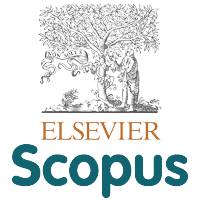Antifungal Activity of Crude Extracts of Ageratum conyzoides, Cyperus rotundus, and Amaranthus spinosus Against Rust Disease
Abstract
Keywords
Full Text:
PDFReferences
Arora, A., Byrem, T. M., Nair, M. G., & Strasburg, G. M. (2000). Modulation of liposomal membrane fluidity by flavonoids and isoflavonoids. Archives of Biochemistry and Biophysics, 373(1), 102–109. crossref
Begum, J., Yusuf, M., Chowdhury, J. U., Khan, S., & Anwar, M. N. (2007). Antifungal activity of forty higher plants against phytopathogenic fungi. Bangladesh Journal of Microbiology, 24(1), 76–78. crossref
Bisht, A., Bisht, G. R. S., Singh, M., Gupta, R., & Singh, V. (2011). Chemical composition and antimicrobial activity of essential oil of tubers of Cyperus rotundus Linn collected from Dehradun (Uttarakhand). International Journal of Research in Pharmaceutical and Biomedical Sciences, 2, 661–665. Retrieved from website
Blount, J. W., Dixon, R. A., & Paiva, N. L. (1992). Stress responses in alfalfa (Medicago sativa L.) XVI. Antifungal activity of medicarpin and its biosynthetic precursors; implications for the genetic manipulation of stress metabolites. Physiological and Molecular Plant Pathology, 41(5), 333–349. crossref
Cheng, S. S., Wu, C. L., Chang, H. T., Kao, Y. T., & Chang, S. T. (2004). Antitermitic and antifungal activities of essential oil of Calocedrus formosana leaf and its composition. Journal of Chemical Ecology, 30(10), 1957–1967. crossref
Cotelle, N., Bernier, J. L., Catteau, J. P., Pommery, J., Wallet, J. C., & Gaydou, E. M. (1996). Antioxidant properties of hydroxy-flavones. Free Radical Biology and Medicine, 20(1), 35–43. crossref
Cushnie, T. P. T., & Lamb, A. J. (2005). Antimicrobial activity of flavonoids. International Journal of Antimicrobial Agents, 26(5), 343–356. crossref
da Cruz Cabral, L., Fernández Pinto, V., & Patriarca, A. (2013). Application of plant derived compounds to control fungal spoilage and mycotoxin production in foods. International Journal of Food Microbiology, 166(1), 1–14. crossref
Dai, G. H., Nicole, M., Andary, C., Martinez, C., Bresson, E., Boher, B., … Geiger, J. P. (1996). Flavonoids accumulate in cell walls, middle lamellae and callose-rich papillae during an incompatible interaction between Xanthomonas campestris pv. malvacearum and cotton. Physiological and Molecular Plant Pathology, 49(5), 285–306. crossref
Dayie, N., Newman, M., Ayitey-Smith, E., & Tayman, F. (2007). Screening for antimicrobial activity of Ageratum conyzoides L.: A pharmaco-microbiological approach. The Internet Journal of Pharmacology, 5(2), 9551. Retrieved from website
de Oliveira, T. L. C., de Araújo Soares, R., Ramos, E. M., das Graças Cardoso, M., Alves, E., & Piccoli, R. H. (2011). Antimicrobial activity of Satureja montana L. essential oil against Clostridium perfringens type A inoculated in mortadella-type sausages formulated with different levels of sodium nitrite. International Journal of Food Microbiology, 144(3), 546–555. crossref
El-Mogy, M. M., & Alsanius, B. W. (2012). Cassia oil for controlling plant and human pathogens on fresh strawberries. Food Control, 28(1), 157–162. crossref
Fung, D. Y. C., Taylor, S., & Kahan, J. (1977). Effects of Butylated Hydroxyanisole (BHA) and Butylated Hydroxytoluene (BHT) on growth and aflatoxin production of Aspergillus flavus. Journal of Food Safety, 1(1), 39–51. crossref
Ghasemzadeh, A., & Ghasemzadeh, N. (2011). Flavonoids and phenolic acids: Role and biochemical activity in plants and human. Journal of Medicinal Plants Research, 5(31), 6697–6703. crossref
Gudžić, B., Djokovic, D., Vajs, V., Palić, R., & Stojanovic, G. (2002). Composition and antimicrobial activity of the essential oil of Hypericum maculatum Crantz. Flavour and Fragrance Journal, 17(5), 392–394. crossref
Gurjar, M. S., Ali, S., Akhtar, M., & Singh, K. S. (2012). Efficacy of plant extracts in plant disease management. Agricultural Sciences, 3(3), 425–433. crossref
Hadacek, F. (2002). Secondary metabolites as plant traits: Current assessment and future perspectives. Critical Reviews in Plant Sciences, 21(4), 273–322. crossref
Harborne, J. B., & Williams, C. A. (2000). Advances in flavonoid research since 1992. Phytochemistry, 55(6), 481–504. crossref
Heimler, D., Vignolini, P., Dini, M. G., & Romani, A. (2005). Rapid tests to assess the antioxidant activity of Phaseolus vulgaris L. dry beans. Journal of Agricultural and Food Chemistry, 53(8), 3053–3056. crossref
Hussain, M. S., Fareed, S., Ansari, S., Rahman, M. A., Ahmad, I. Z., & Saeed, M. (2012). Current approaches toward production of secondary plant metabolites. Journal of Pharmacy & BioAllied Sciences, 4(1), 10–20. crossref
Ikigai, H., Nakae, T., Hara, Y., & Shimamura, T. (1993). Bactericidal catechins damage the lipid bilayer. Biochimica et Biophysica Acta (BBA) - Biomembranes, 1147(1), 132–136. crossref
Joko, T., Umehara, M., Murata, T., Etoh, H., Izumori, K., & Tsuyumu, S. (2018). Hyperinduction of pectate lyase in Dickeya chrysanthemi EC16 by plant-derived sugars. Journal of Plant Interactions, 13(1), 141–150. crossref
Jovanovic, S. V., Steenken, S., Tosic, M., Marjanovic, B., & Simic, M. G. (1994). Flavonoids as antioxidants. Journal of the American Chemical Society, 116(11), 4846–4851. crossref
Kamboj, A., & Saluja, A. K. (2008). Ageratum conyzoides L.: a review on its phytochemical and pharmacological profile. International Journal of Green Pharmacy, 2(2), 59–68. Retrieved from website
Karimi, E., & Jaafar, H. Z. E. (2011). HPLC and GC-MS determination of bioactive compounds in microwave obtained extracts of three varieties of Labisia pumila Benth. Molecules, 16(8), 6791–6805. crossref
Kong, C., Liang, W., Hu, F., Xu, X., Wang, P., Jiang, Y., & Xing, B. (2004). Allelochemicals and their transformations in the Ageratum conyzoides intercropped citrus orchard soils. Plant and Soil, 264(1–2), 149–157. crossref
Maiyo, Z., Ngure, R., Matasyoh, J., & Chepkorir, R. (2010). Phytochemical constituents and antimicrobial activity of leaf extracts of three Amaranthus plant species. African Journal of Biotechnology, 9(21), 3178–3182. Retrieved from website
Mierziak, J., Kostyn, K., & Kulma, A. (2014). Flavonoids as important molecules of plant interactions with the environment. Molecules, 19(10), 16240–16265. crossref
Mondal, S., & Badigannavar, A. M. (2015). Peanut rust (Puccinia arachidis Speg.) disease: its background and recent accomplishments towards disease resistance breeding. Protoplasma, 252(6), 1409–1420. crossref
Mondal, S., Mahapatra, S. C., Mirdha, B. R., & Naik, S. N. (2007). Antimicrobial activities of essential oils obtained from fresh and dried leaves of Ocimum sanctum (L.) against enteric bacteria and yeast. Acta Horticulturae, 756, 267–270. crossref
Mushatq, S., Haider, M., Ali, A., Javed, S., Khokhar, I., & Mukhtar, I. (2012). In vitro comparative screening of antibacterial and antifungal activities of some common weeds extracts. Pakistan Journal of Weed Science Research, 18(1), 15–25. Retrieved from website
Ney, B., Bancal, M. O., Bancal, P., Bingham, I. J., Foulkes, J., Gouache, D., … Smith, J. (2013). Crop architecture and crop tolerance to fungal diseases and insect herbivory. Mechanisms to limit crop losses. European Journal of Plant Pathology, 135(3), 561–580. crossref
Ohemeng, K. A., Schwender, C. F., Fu, K. P., & Barrett, J. F. (1993). DNA gyrase inhibitory and antibacterial activity of some flavones(1). Bioorganic & Medicinal Chemistry Letters, 3(2), 225–230. crossref
Paiva, P. M. G., Gomes, F. S., Napoleão, T. H., Sá, R. A., Correia, M. T. S., & Coelho, L. C. B. B. (2010). Antimicrobial activity of secondary metabolites and lectins from plants. Current Research, Technology and Education Topics in Applied Microbiology and Microbial Biotechnology, 1, 396–406. Retrieved from PDF
Savary, S., Teng, P. S., Willocquet, L., & Nutter, F. W. J. (2006). Quantification and modeling of crop losses: A review of purposes. Annual Review of Phytopathology, 44, 89–112. crossref
Singh, A., Maurya, S., Singh, R., & Singh, U. P. (2011). Antifungal efficacy of some ethyl acetate extract fractions of Cyperus rotundus rhizomes against spore germination of some fungi. Archives of Phytopathology and Plant Protection, 44(20), 2004–2011. crossref
Singleton, V. L., Orthofer, R., & Lamuela-Raventós, R. M. (1999). Analysis of total phenols and other oxidation substrates and antioxidants by means of folin-ciocalteu reagent. Methods in Enzymology, 299, 152–178. crossref
Subrahmanyam, P., & Mcdonald, D. (1987). Groundnut rust disease: Epidemiology and control. In Proceedings of a Discussion Group Meeting “Groundnut rust disease [Puccinia arachidis].” Patancheru, IN: ICRISAT. Retrieved from website
Subrahmanyam, P., McDonald, D., Waliyar, F., Reddy, L. J., Nigam, S. N., Gibbons, R. W., … Rao, P. V. S. (1995). Screening methods and sources of resistance to rust and late leaf spot of groundnut. Information Bulletin no. 47. Patancheru, India: International Crops Research Institute for the Semi-Arid Tropics. Retrieved from PDF
Treutter, D. (2005). Significance of flavonoids in plant resistance and enhancement of their biosynthesis. Plant Biology, 7(6), 581–591. crossref
Xu, B. J., & Chang, S. K. C. (2007). A comparative study on phenolic profiles and antioxidant activities of legumes as affected by extraction solvents. Journal of Food Science, 72(2), S159–S166. crossref
Yang, D., Michel, L., Chaumont, J. P., & Millet-Clerc, J. (2000). Use of caryophyllene oxide as an antifungal agent in an in vitro experimental model of onychomycosis. Mycopathologia, 148(2), 79–82. crossref
Yazdani, D., Tan, Y. H., Zainal Abidin, M. A., & Jaganath, I. B. (2011). A review on bioactive compounds isolated from plants against plant pathogenic fungi. Journal of Medicinal Plants Research, 5(30), 6584–6589. crossref
Yusnawan, E., & Inayati, A. (2016). Methanolic extracts of three weeds as botanical fungicides to control peanut rust disease. Nusantara Bioscience, 8(1), 117–122. crossref
DOI: http://doi.org/10.17503/agrivita.v40i0.1889
Copyright (c) 2018 UNIVERSITAS BRAWIJAYA

This work is licensed under a Creative Commons Attribution-NonCommercial 4.0 International License.








